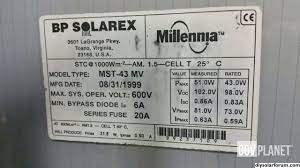PaulLad
New Member
- Joined
- Jul 14, 2020
- Messages
- 169
Will's generic formula is divide your total battery watts by 5 and this is how many watts of panels you should have. The idea being that you should be able to charge your batts in one full sunny day. So if I have 5000 watts of batteries, then 1000 watts of panels should do it right? But in late fall here, I'm only getting about 50 watts out of a 100 watt panel in full sun at the ideal angle. On top of that, the days are only 10 hrs long. That means that with 1000 watts of panels it would take 10 hours of full sun at the ideal angle to charge my batts. Sounds like I need 2000 watts of panels. Am I thinking straight? Thanks.



